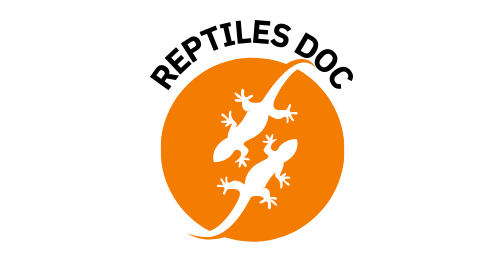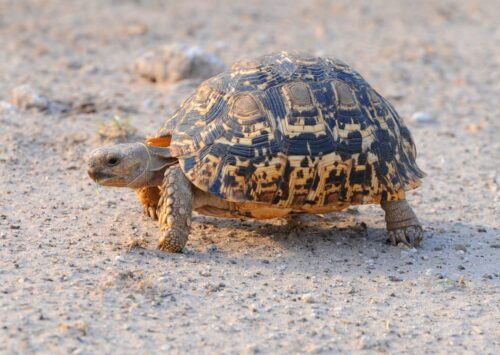They are land-dwelling reptiles with bodies adapted for walking on land, not swimming. If placed in water, they risk drowning because they are not capable swimmers. Can tortoise live in water? They are terrestrial animals specifically adapted to life on land.
Unlike turtles, which can be aquatic or semi-aquatic, tortoises have several characteristics that make them suited for land rather than water.
Tortoises are land-dwelling reptiles known for their slow movements and long lifespans. Unlike their aquatic cousins, turtles, tortoises are not adapted to live in water. While they do require access to fresh water for drinking and occasionally soaking, they are not equipped to live in aquatic environments.
Their bodies are designed for life on land, with thick, sturdy legs and a heavy, dome-shaped shell that is not buoyant. Prolonged exposure to water can lead to serious health issues for tortoises, including drowning or respiratory problems. Therefore, tortoises should be provided with a dry, terrestrial habitat that meets their specific needs.
Do Turtles Live on Land or Water

Turtles are ancient reptiles, having existed for over 200 million years. They are part of the order Testudines, which includes both terrestrial and aquatic species. These animals are known for their distinctive shells, which protect them from predators and environmental conditions.
While all turtles share some common characteristics, their habitats can differ significantly based on their species. The two main types of turtles are aquatic turtles and terrestrial turtles.
Terrestrial Turtles
Terrestrial turtles, commonly referred to as tortoises, are adapted to live primarily on land. These turtles are typically found in dry environments such as deserts, grasslands, and forests.
They have sturdy, dome-shaped shells that provide protection from the sun and predators. Their limbs are strong and well-suited for walking on land, with stumpy, elephant-like feet designed to support their body weight.
Tortoises are herbivores, feeding on a diet that includes grasses, leaves, fruits, and vegetables. Unlike aquatic turtles, they do not have webbed feet and are not strong swimmers. They may occasionally venture into shallow water to drink or cool off, but they do not live in water.
Aquatic Turtles
0Aquatic turtles, on the other hand, are adapted to live in water environments. These include species such as sea turtles, freshwater turtles, and terrapins. Aquatic turtles are commonly found in oceans, rivers, lakes, ponds, and marshes.
Their bodies are streamlined for swimming, with webbed feet or flippers that allow them to move efficiently in water. Unlike terrestrial turtles, aquatic turtles have flatter shells, which reduce water resistance and help them swim faster. Sea turtles, for example, spend most of their lives inzrft5 the ocean, only coming ashore to lay eggs.
Aquatic turtles have diverse diets that can include fish, insects, aquatic plants, and algae, depending on the species. They can also absorb oxygen through their skin while submerged, allowing them to stay underwater for extended periods.
Semi-Aquatic Turtles
Some turtles are semi-aquatic, meaning they live in both land and water environments. These turtles, like the red-eared slider and the box turtle, spend time on land basking in the sun but also rely on water for feeding, hydration, and temperature regulation.
Semi-aquatic turtles have the ability to move between land and water with ease, using their webbed feet for swimming and their claws for digging or climbing.
Baby Tortoise Lives in Water or Land
Baby tortoises, like their adult counterparts, are fascinating creatures with specific habitat needs. Understanding whether a baby tortoise should live in water or on land is crucial for their proper care and well-being.
Tortoises are part of the Testudinidae family, and they are distinct from other reptiles like turtles, which often have a more aquatic lifestyle. This distinction plays a significant role in determining the correct environment for baby tortoises.
Habitat Preferences of Baby Tortoises
- Terrestrial Lifestyle:
Tortoises are primarily land-dwelling reptiles. From birth, they are adapted to live on land rather than in water. Unlike turtles, which have webbed feet and streamlined bodies for swimming, tortoises have sturdy, elephantine legs designed for walking on solid ground. Baby tortoises inherit these characteristics, making land their natural habitat. - Importance of a Dry Environment:
Baby tortoises need a dry environment with access to moisture but not immersion in water. Their shells and skin are not suited for prolonged exposure to water, as this can lead to health issues such as shell rot or respiratory infections. A humid environment is beneficial, especially during the early stages of their life, but their primary living area should be on land. - Hydration and Moisture:
While baby tortoises should not live in water, they do require regular access to water for drinking and soaking. Soaking helps with hydration, digestion, and shedding. A shallow water dish that allows the tortoise to soak without being fully submerged is ideal. This dish should be cleaned and refilled daily to maintain hygiene. - Basking and Temperature Regulation:
Like all reptiles, tortoises are ectothermic, meaning they rely on external heat sources to regulate their body temperature. Baby tortoises need access to a basking area with appropriate temperatures (usually around 85-95°F) to digest food properly and maintain their overall health. A cool area should also be provided to allow them to regulate their temperature by moving between warm and cool spots.
Can Tortoise Swim?

Tortoises are fascinating reptiles known for their slow and steady pace, long lifespans, and hard shells. Unlike their aquatic relatives, turtles, tortoises are primarily land-dwelling creatures.
This leads to a common question: Can tortoises swim? The answer is more complex than a simple yes or no and involves understanding the physical and behavioral adaptations of tortoises.
Physical Adaptations: Tortoises are not built for swimming. Their bodies are designed for life on land, featuring stout, sturdy legs with rounded, club-like feet. These limbs are excellent for walking on various terrains but are not adapted for swimming.
Unlike turtles, which have webbed feet or flippers that enable them to navigate through water efficiently, tortoises lack such adaptations.
Buoyancy and Risks: While tortoises can float to some extent, they are not buoyant like many aquatic animals. Their heavy shells and dense bodies make it difficult for them to stay afloat for long periods. If placed in deep water, a tortoise might struggle to keep its head above the surface, leading to exhaustion and potential drowning.
Behavioral Tendencies: Tortoises naturally avoid water bodies and prefer dry, terrestrial environments. In the wild, they are rarely seen near large bodies of water. When faced with a body of water, a tortoise will typically try to find a way around it rather than attempt to swim through it. If a tortoise accidentally falls into water, it may paddle instinctively, but this is more a survival response than a swimming skill.
Exceptions: There are a few exceptions to the rule. Some species of tortoises, such as the leopard tortoise, are known to enter shallow water voluntarily, particularly to drink or cool off. However, even these tortoises are not capable swimmers and would be at risk in deep water.
How Long Can Tortoise Live in Water
Tortoises are primarily terrestrial reptiles, meaning they are adapted to live on land rather than in water.
Unlike turtles, which are more aquatic or semi-aquatic, tortoises have evolved to live in dry environments with specific physiological traits that make them ill-suited for extended periods in water.
Why Tortoises Can’t Live in Water for Long
- Respiratory System: Tortoises have lungs that are adapted for breathing air. They do not have the ability to extract oxygen from water like fish or some amphibians. Prolonged submersion in water can cause a tortoise to drown, as it cannot hold its breath indefinitely.
- Shell Structure: The shell of a tortoise is heavier and more dome-shaped compared to aquatic turtles, whose shells are flatter and more streamlined for swimming. This makes tortoises less buoyant and more likely to sink if placed in water.
- Skin and Limb Adaptation: Tortoises have rough, scaly skin that is not suited for prolonged water exposure. Their limbs are also adapted for walking on land rather than swimming. They lack the webbed feet or flipper-like limbs that aquatic turtles possess.
- Temperature Regulation: Tortoises are ectothermic (cold-blooded) animals, meaning they rely on external sources to regulate their body temperature. If a tortoise is in water for too long, it can become too cold, leading to health issues such as respiratory infections or even death.
How Long Can a Tortoise Stay in Water?
Tortoises can tolerate brief exposure to water for purposes such as drinking or cooling down, but this should not last more than a few minutes. If submerged, a tortoise might survive for a few minutes to an hour, depending on the species and individual health.
However, even a short period of full submersion can be dangerous, and extended exposure can be fatal.
What Happens if a Tortoise Stays in Water Too Long?
If a tortoise stays in water for too long, several problems can occur:
- Drowning: As mentioned, tortoises cannot breathe underwater and will eventually drown if they cannot surface for air.
- Hypothermia: Prolonged exposure to cold water can lead to hypothermia, a dangerous drop in body temperature that can impair bodily functions and lead to death.
- Respiratory Issues: Exposure to cold or stagnant water can cause respiratory infections, as tortoises are very sensitive to changes in temperature and humidity.
- Stress and Panic: Being in water for too long can cause significant stress to a tortoise, leading to panic behaviors such as frantic movements, which can further exhaust the animal.
Can Turtle Live on Land

Turtles are reptiles known for their distinctive bony or cartilaginous shells that protect their bodies.
They belong to the order Testudines and can be found in diverse environments ranging from oceans to freshwater lakes and rivers. While many turtles are primarily aquatic, there are species specifically adapted to terrestrial life.
Terrestrial Adaptations
- Shell Structure and Function:
- Aquatic Turtles: Many aquatic turtles have streamlined shells that reduce drag and make swimming more efficient. These shells are typically flatter and more hydrodynamic.
- Terrestrial Turtles: Land-dwelling turtles, such as tortoises, have more domed shells that provide greater protection against predators and environmental hazards. The shape of their shells helps them to move on land more effectively and supports their heavier, sturdier bodies.
- Limbs and Mobility:
- Aquatic Turtles: Their limbs are adapted for swimming. They often have webbed feet or flippers that aid in propulsion through water.
- Terrestrial Turtles: Tortoises and other land turtles have stronger, more robust limbs with feet adapted for walking on solid ground. Their legs are usually thicker, and their feet may have features like claws to aid in digging and climbing.
- Respiration and Water Conservation:
- Aquatic Turtles: They are well-adapted to spend long periods underwater and have specialized respiratory systems to manage oxygen while submerged.
- Terrestrial Turtles: Land turtles have more efficient respiratory systems suited for air breathing. They also have adaptations to conserve water, such as efficient kidney function and the ability to absorb moisture from their diet.
- Diet and Nutrition:
- Aquatic Turtles: Their diet often consists of aquatic plants, insects, and small fish.
- Terrestrial Turtles: They primarily feed on vegetation, including grasses, leaves, and fruits. Their digestive systems are adapted to process fibrous plant material and extract necessary nutrients efficiently.
Examples of Terrestrial Turtles
- Tortoises: The most well-known land-dwelling turtles are tortoises. They are exclusively terrestrial and have evolved to live in a variety of land habitats, from deserts to forests.
- Box Turtles: While not as strictly terrestrial as tortoises, box turtles are also primarily land-dwelling and spend much of their time on land, though they may occasionally enter water.
Behavior and Habitat
- Habitat Needs:
- Terrestrial turtles require habitats that provide adequate food, shelter, and suitable conditions for temperature regulation and moisture.
- They may dig burrows or seek cover under vegetation to protect themselves from predators and extreme weather conditions.
- Behavioral Adaptations:
- Land turtles often exhibit behaviors such as basking in the sun to regulate their body temperature and foraging for food in their terrestrial environment.
- They are generally less agile than their aquatic counterparts and rely on their shells and camouflage for protection.
Difference Between Turtle and Tortoise
Turtles and tortoises are often confused due to their similar appearance and the general term “testudines” used to refer to both. However, these reptiles exhibit distinct differences in their anatomy, habitat preferences, and behaviors. Understanding these differences can provide insights into their unique adaptations and ecological roles.
Key Differences Between Turtles and Tortoises
- Habitat
- Turtles: Typically, turtles are adapted to life in or around water. They are found in a variety of aquatic environments such as oceans, rivers, lakes, and ponds. Turtles have webbed feet or flippers, which are suited for swimming.
- Tortoises: Tortoises are primarily terrestrial and are adapted to life on land. They are found in a range of environments from deserts to grasslands. Tortoises have sturdy, elephant-like legs suited for walking on land.
- Shell Structure
- Turtles: The shells of turtles are generally streamlined and more hydrodynamic to facilitate swimming. The shells are often lighter and more flexible compared to tortoises.
- Tortoises: Tortoises have heavier, domed shells that provide protection and support for their terrestrial lifestyle. Their shells are thicker and more rigid, which helps them defend against predators and cope with the rough terrain.
- Diet
- Turtles: Turtles are often omnivores, with diets that can include a mix of aquatic plants, insects, and small fish. Their diet depends on their habitat and available food sources.
- Tortoises: Most tortoises are herbivores and have a diet primarily composed of grasses, leaves, and fruits. Their diet reflects their terrestrial environment and the vegetation available in their habitats.
- Physical Adaptations
- Turtles: Adaptations for aquatic life include webbed feet or flippers, streamlined bodies, and sometimes more sensitive senses for detecting prey or predators in the water.
- Tortoises: Tortoises have strong, sturdy legs designed for walking and digging. Their limbs are more robust, and their claws are adapted for scratching and burrowing in the soil.
- Behavior and Activity
- Turtles: Many turtles are more active and have various behaviors associated with swimming and foraging in aquatic environments. They often spend a significant portion of their time in the water.
- Tortoises: Tortoises are more likely to be seen basking in the sun and roaming on land. They exhibit behaviors adapted to conserving moisture and foraging for vegetation on land.
- Reproduction and Lifespan
- Turtles: Turtles often lay their eggs in sandy or soft soil near water. Their lifespan can vary widely depending on the species, ranging from a few decades to over 50 years.
- Tortoises: Tortoises typically lay their eggs in burrows or nests they dig themselves. They tend to have longer lifespans compared to turtles, with many species living 50 years or more, and some even reaching over 100 years.
Can Turtle Live in Water
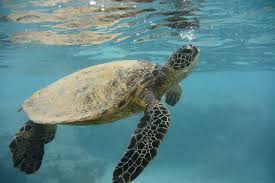
Turtles are a diverse group of reptiles known for their distinctive shells and varied lifestyles. They inhabit a wide range of environments, from deserts to tropical rainforests, but many species are particularly associated with aquatic habitats. U
Aquatic vs. Terrestrial Turtles
Turtles are generally categorized into aquatic and terrestrial species, each with distinct adaptations suited to their environments. Here’s a closer look at how turtles interact with water:
- Aquatic Turtles
- Adaptations: Aquatic turtles, such as sea turtles and freshwater turtles, are highly adapted to life in the water. Their streamlined bodies and webbed feet or flippers make them excellent swimmers. Aquatic turtles have specialized lungs that allow them to hold their breath for extended periods while submerged.
- Habitat: These turtles spend most of their lives in water, whether in oceans, rivers, lakes, or ponds. Sea turtles, for instance, migrate across entire oceans, while freshwater turtles might be found in specific lakes or rivers.
- Feeding and Behavior: Aquatic turtles have diets that vary by species but often include aquatic plants, fish, and invertebrates. They are often seen basking on land, but they return to the water to regulate their body temperature and find food.
- Semi-Aquatic Turtles
- Adaptations: Semi-aquatic turtles, like the red-eared slider or the painted turtle, spend a significant amount of time in both water and on land. They have limbs that are adapted for swimming but also for walking on land. Their shells are often flatter and more streamlined compared to those of purely terrestrial turtles.
- Habitat: These turtles are typically found in ponds, swamps, and marshes, where they can easily access both land and water. They use the water for feeding and cooling off, while land is used for nesting and basking.
- Feeding and Behavior: They consume a varied diet, including aquatic plants, insects, and small fish. They are often seen basking in the sun to regulate their body temperature, which is essential for their metabolic processes.
- Terrestrial Turtles
- Adaptations: Terrestrial turtles, also known as tortoises, are adapted to life on land. Their bodies are more robust and their limbs are built for walking rather than swimming. They have heavier, dome-shaped shells that provide protection and support on land.
- Habitat: Tortoises inhabit a variety of terrestrial environments, including deserts, grasslands, and forests. While they may drink from water sources, they do not live in or spend significant time in aquatic environments.
- Feeding and Behavior: Their diets mostly consist of plants, including grasses, fruits, and leaves. They have evolved to conserve water and can often go for long periods without drinking.
Can Tortoise Breathe Underwater
Tortoises, like all reptiles, have a respiratory system adapted for air breathing. Unlike amphibians and some aquatic reptiles, tortoises are not equipped to extract oxygen from water. Their lungs are designed to process air, and they rely on pulmonary respiration to meet their oxygen needs.
Respiratory Adaptations
- Lung Structure: Tortoises have relatively large lungs compared to their body size, which allows them to store and utilize oxygen efficiently when they are on land. Their lung capacity and the ability to hold their breath can vary depending on the species.
- Breathing Mechanism: Tortoises breathe by expanding and contracting their chest cavity. This movement draws air into the lungs and pushes it out. Unlike some aquatic animals, tortoises cannot perform this function underwater.
Underwater Behavior
- Holding Breath: While tortoises cannot breathe underwater, they are capable of holding their breath for extended periods. Some species can remain submerged for several minutes to an hour, depending on the water temperature and the tortoise’s activity level. This ability is particularly useful for avoiding predators or in search of food.
- Buoyancy: Tortoises have a heavier, more solid shell compared to turtles, which affects their buoyancy. Most tortoises prefer to stay on land but can swim if necessary. Their body is not as streamlined as that of aquatic reptiles, making them less efficient swimmers.
How Long Can Tortoises Live in Water?
Tortoises are terrestrial reptiles, which means they are adapted to live on land rather than in water. Unlike turtles, which are often found in aquatic environments, tortoises have evolved to thrive in dry habitats like deserts, grasslands, and forests.
This difference in habitat preference influences how they interact with water and their longevity in such environments.
How Long Can Tortoises Live in Water?
- Adaptation to Water: Tortoises are not adapted for prolonged periods in water. While they can swim and may wade in shallow water, their physiology is designed for life on land. Tortoises’ lungs are more suited to air breathing, and their body structures are not optimized for buoyancy or efficient movement in water.
- Risks of Prolonged Immersion:
- Drowning: Tortoises are at risk of drowning if they remain submerged in water for too long. Unlike aquatic turtles, they do not have the ability to hold their breath indefinitely or move efficiently underwater.
- Temperature Regulation: Prolonged exposure to water can also disrupt a tortoise’s ability to regulate its body temperature. Since tortoises are ectothermic (cold-blooded), they rely on external sources of heat to regulate their body temperature. Extended immersion in cold water can lead to hypothermia.
- Skin Issues: Extended exposure to water can also cause skin problems. Tortoises’ skin is adapted to dry conditions, and prolonged exposure to moisture can lead to fungal infections and shell rot.
- General Guidelines:
- Tortoises should not be left in water for extended periods. A brief soak to help with hydration or temperature regulation is typically fine, but they should be monitored to ensure they do not stay in water for too long.
- In captivity, providing a shallow water dish for drinking and occasional soaking is sufficient. It’s important to ensure the water is clean and the depth is shallow enough to prevent accidental drowning.
Is It Ok to Put Tortoise in Water?
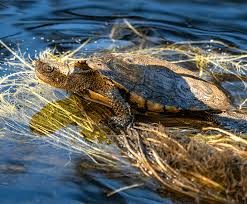
Tortoises are fascinating reptiles known for their slow pace and long lifespans. However, there is often confusion about their care, particularly when it comes to water. While some reptiles thrive in water, tortoises are generally land-dwellers, and their relationship with water is quite different. Whether or not it’s okay to put a tortoise in water depends on the species and the purpose of the immersion.
The Relationship Between Tortoises and Water
1. Tortoise Anatomy and Water Adaptation
Tortoises have evolved as terrestrial animals with anatomy suited for life on land. Their limbs are strong and sturdy, built for walking rather than swimming. Unlike aquatic turtles, tortoises do not have webbed feet, making them poor swimmers. If placed in deep water, a tortoise can easily become overwhelmed and may even drown.
2. Hydration Needs
Despite being land-dwellers, tortoises do need water for hydration. Most tortoises will drink water and even soak in shallow pools to absorb moisture through their skin and cloaca. Soaking is beneficial, especially for species from arid environments, as it helps prevent dehydration and supports healthy shedding of the skin.
3. Bathing and Soaking
While tortoises should not be submerged in deep water, it is beneficial to give them shallow baths. A shallow bath in lukewarm water, just enough to cover the lower part of their shell, can help with hydration, digestion, and cleanliness. Soaking can also stimulate bowel movements, which is especially useful for constipated tortoises.
Risks of Submerging a Tortoise in Water
- Risk of Drowning: As mentioned, tortoises are not designed for swimming, and placing them in deep water can lead to panic and drowning.
- Stress: Prolonged exposure to water, especially if it’s too deep, can cause stress, leading to health issues such as respiratory infections or a weakened immune system.
- Temperature Sensitivity: Tortoises are ectothermic (cold-blooded), meaning they rely on external sources of heat to regulate their body temperature. If the water is too cold, it can cause a drop in their body temperature, leading to lethargy or even shock.
What Type of Tortoise Lives in the Water?
Tortoises are fascinating reptiles known for their slow, deliberate movements and their long lifespan. They are primarily terrestrial creatures, spending most of their lives on land.
However, when it comes to the question of tortoises living in water, it’s important to distinguish between tortoises and other types of turtles.
While most tortoises are land-dwellers, certain species have adapted to live in or around water.
Tortoises vs. Turtles
Tortoises are a subset of the order Testudines, which also includes turtles and terrapins. The primary distinction between these groups lies in their habitat:
- Tortoises are land-dwelling and have evolved to live in dry environments, such as deserts, grasslands, and forests. They have sturdy, domed shells and thick, elephantine legs that are adapted for walking on land rather than swimming.
- Turtles are more versatile, with many species adapted to aquatic environments. They have flatter, streamlined shells and webbed feet or flippers, which make them better swimmers.
- Terrapins are semi-aquatic and often live in brackish or freshwater environments.
The Water-Living Tortoise: The Pseudemys
Although tortoises are generally not suited for living in water, a notable exception is the genus Pseudemys, also known as cooters. These are semi-aquatic tortoises that are capable of living both on land and in water, although they spend significant time basking on land.
Key Characteristics of Pseudemys:
- Semi-Aquatic Nature: Unlike most tortoises, Pseudemys species are adapted to life in and around water bodies such as rivers, lakes, and ponds. They have slightly webbed feet, which help them navigate through the water.
- Diet: These tortoises are primarily herbivorous, feeding on aquatic plants, algae, and occasionally small invertebrates. Their diet and habitat are closely linked to their semi-aquatic lifestyle.
- Physical Adaptations: While Pseudemys have a more streamlined shell than fully terrestrial tortoises, they are not as well-suited to swimming as true aquatic turtles. Their limbs are more robust than those of turtles, allowing them to walk on land effectively, but they can also paddle through the water when needed.
- Habitat: Pseudemys tortoises are often found in the southeastern United States, where they inhabit slow-moving rivers, swamps, and marshes. They prefer areas with abundant vegetation, which provides both food and shelter.
Can We Keep Tortoise in Water Tank?
Tortoises are fascinating reptiles that are often kept as pets due to their relatively low maintenance needs and long lifespan.
However, their care requires specific attention, particularly when it comes to their habitat.
One common question among tortoise owners is whether it is safe or appropriate to keep a tortoise in a water tank.
Can Tortoises Be Kept in Water Tanks?
- Natural Habitat and Behavior: Tortoises are primarily land-dwelling reptiles, known as terrestrial animals. Unlike aquatic turtles, tortoises have evolved to live on dry land, in environments such as deserts, grasslands, and forests. Their bodies are not adapted to living in water for extended periods. While they can swim to some extent, they are not natural swimmers like turtles and can easily become stressed or even drown if kept in water for too long.
- Physiological Considerations: The anatomy of a tortoise is designed for life on land. Their feet are sturdy and well-suited for walking on solid ground rather than swimming. Unlike aquatic turtles, tortoises do not have webbed feet, which are essential for efficient swimming. Additionally, their lungs are not adapted to deal with the pressure of submersion in water for long periods, making it difficult for them to breathe if they are submerged.
- Hydration Needs: Although tortoises should not be kept in a water tank, they do require access to water for drinking and soaking. Soaking helps them stay hydrated and can aid in shedding and maintaining healthy skin. A shallow water dish, large enough for the tortoise to sit in but not deep enough to cover its entire body, is ideal. This allows the tortoise to soak as needed without the risk of drowning.
- Health Risks: Keeping a tortoise in a water tank can lead to several health risks. Prolonged exposure to water can cause respiratory infections, skin issues, and stress. Additionally, tortoises in water tanks may not be able to regulate their body temperature effectively, leading to hypothermia or overheating, depending on the water temperature.
- Suitable Enclosure: A proper tortoise enclosure should mimic the natural environment of the species. This typically includes a spacious, dry area with substrate for burrowing, a basking spot with appropriate heat and UV lighting, and a shaded area for cooling down. The enclosure should also include a shallow water dish for drinking and soaking, but the primary habitat should be dry and terrestrial.
Can Tortoise Lay Eggs in Water?
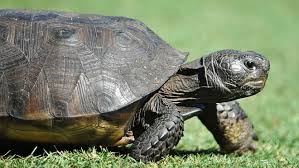
Tortoises are fascinating reptiles known for their unique adaptations to a terrestrial lifestyle. Unlike their aquatic relatives, turtles, tortoises are primarily land-dwellers with specialized behaviors and physical traits suited for life on solid ground.
One intriguing aspect of their reproductive behavior is their nesting process, particularly concerning whether they lay eggs in water.
- Nesting Habits of Tortoises
Tortoises are primarily terrestrial creatures, and their reproductive behaviors reflect their land-based lifestyle. Female tortoises lay eggs in a nest that they create in soil or sand. The nest is typically dug in a sunny, well-drained area to ensure the eggs are kept at an appropriate temperature for incubation. This choice of nesting site is crucial because the right conditions are needed for the successful development and hatching of the eggs.
- Adaptations for Terrestrial Reproduction
Tortoises have evolved various adaptations that align with their terrestrial habitat. Their reproductive strategy involves laying eggs in a secure, dry environment rather than in water. This behavior is a direct result of their evolutionary history and their need to protect their eggs from potential predators and environmental conditions that could be detrimental if laid in water.
- Why Tortoises Do Not Lay Eggs in Water
The primary reason tortoises do not lay eggs in water is due to their physiological and ecological adaptations. Water could potentially harm the eggs in several ways:
- Temperature Regulation: Water can cause fluctuations in temperature, which can be detrimental to the developing embryos. Tortoise eggs require a stable temperature to incubate properly.
- Oxygen Levels: Eggs laid in water might face issues with oxygen supply, which is essential for the developing embryos. Dry soil or sand provides a more controlled environment for the exchange of gases.
- Predation and Environment: Laying eggs in water increases the risk of predation and environmental hazards, such as flooding, which can damage or wash away the eggs.
- Exceptions and Special Cases
While most tortoises adhere to the above reproductive strategies, it’s worth noting that there might be some variation among different species or under specific conditions. However, the general rule across tortoise species is to lay eggs in a terrestrial nest rather than in water.
Why Tortoise Is Kept in Water?
Tortoises are fascinating reptiles, known for their slow pace and long lifespan. Unlike their aquatic cousins, turtles, tortoises are primarily land-dwelling creatures. However, there are times when tortoises are kept in water, which can raise questions among pet owners and reptile enthusiasts alike. Understanding the reasons behind this practice is essential for ensuring the well-being of these unique reptiles.
The Role of Water in a Tortoise’s Life
Tortoises are not naturally inclined to live in water, but they do require regular access to it for various essential functions. Here are the key reasons why a tortoise might be kept in water:
- Hydration:
- Tortoises need to stay hydrated, and soaking in water is one of the ways they absorb moisture. While they primarily drink water, they can also absorb it through their skin and cloaca (the common exit cavity for the intestinal, urinary, and reproductive tracts). Soaking helps prevent dehydration, especially in species that come from arid environments.
- Digestion:
- Soaking in water can aid a tortoise’s digestion. It helps to soften the food in their digestive system, making it easier to pass. This is particularly important for tortoises that consume a high-fiber diet, which can sometimes lead to constipation.
- Shedding:
- Like other reptiles, tortoises shed their skin, albeit in smaller, less noticeable amounts. Soaking in water helps loosen and remove the old skin, preventing any complications that might arise from retained shed.
- Cleaning:
- Tortoises can get dirty, especially in captivity where they might walk through their food or waste. Keeping a tortoise in water helps to clean off any debris or dirt that might accumulate on their shell or skin. This prevents infections and promotes overall health.
- Temperature Regulation:
- In some cases, a tortoise might be soaked in lukewarm water to help regulate its body temperature. This is especially useful if the tortoise has been exposed to cooler environments and needs to warm up safely.
- Medical Treatment:
- Veterinarians might recommend soaking a tortoise in medicated water to treat specific health issues, such as shell rot, fungal infections, or parasites. This ensures that the medicine reaches the affected areas effectively.
How Long Can a Tortoise Live Without Food?
Tortoises are cold-blooded reptiles, meaning their metabolism is much slower compared to warm-blooded animals. This slow metabolism allows them to conserve energy, making it possible for them to endure long periods without eating.
In the wild, this adaptation is crucial for survival, especially in arid or seasonal environments where food may not be readily available year-round.
However, while tortoises can survive without food for some time, it’s important to understand the limits and risks associated with prolonged fasting.
How Long Can a Tortoise Survive Without Food?
- Species and Size: Different tortoise species have varying abilities to survive without food. Larger species like the Galápagos tortoise can go for several months without eating, thanks to their ability to store fat and water in their bodies. Smaller species, like the Russian tortoise, can also survive for a significant time without food, but their duration is typically shorter due to their smaller fat reserves.
- Age and Health: Younger tortoises generally need more frequent feedings as they are still growing and developing. A juvenile tortoise may only be able to go a few weeks without food before its health starts to decline. Adult tortoises, particularly those in good health, can survive much longer without food, sometimes for months. However, tortoises that are sick or stressed will have a reduced capacity to fast and may experience health issues more quickly.
- Environmental Factors: The environment plays a significant role in how long a tortoise can survive without food. In cooler temperatures, a tortoise’s metabolism slows down even further, allowing it to survive longer without eating. This is why many tortoises enter a state of brumation (a type of hibernation) during the winter months, during which they may not eat for several months. In contrast, in a warm environment, a tortoise’s metabolism is more active, and it will need food more regularly.
- Hydration: While tortoises can survive without food for extended periods, access to water is crucial. Dehydration poses a greater immediate threat to a tortoise’s survival than lack of food. A well-hydrated tortoise can better endure a period of fasting, but without water, it can quickly become dehydrated, leading to serious health issues or even death.
- Fat Reserves: Tortoises store fat in their bodies, which they can utilize for energy during periods of food scarcity. The larger the fat reserves, the longer the tortoise can survive without food. However, once these fat reserves are depleted, the tortoise will begin to break down muscle tissue for energy, which can lead to weakness, organ failure, and eventually death.
Risks of Prolonged Fasting
While tortoises are capable of surviving long periods without food, it is not ideal and should not be encouraged unless absolutely necessary. Prolonged fasting can lead to malnutrition, weakened immune systems, and organ damage.
In a domesticated environment, tortoise owners should ensure their pets have a regular and balanced diet to avoid these health risks.
What Are a Tortoise’s Enemies?
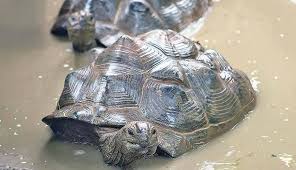
Tortoises are remarkable creatures known for their hard shells, which provide significant protection against predators. Despite this, they still face numerous threats in the wild and in captivity.
These threats range from natural predators to environmental hazards and human activities.
Natural Predators
- Mammalian Predators: Various mammals pose a threat to tortoises, particularly to their eggs and hatchlings. In the wild, animals such as foxes, raccoons, and skunks may dig up and consume tortoise eggs. Larger predators, such as coyotes or bobcats, might target young or even adult tortoises, especially if they are not in their shells or if they are vulnerable.
- Birds of Prey: Birds like hawks and eagles are known to prey on young tortoises. They can spot and snatch up juvenile tortoises from above, especially when the tortoises are still small and not fully able to retract into their shells.
- Reptiles: In some regions, larger reptiles, such as monitor lizards, might prey on tortoise hatchlings or small adults. These reptiles can overpower young tortoises and break through their shells.
Environmental Threats
- Climate Change: Rising temperatures and changes in weather patterns can disrupt the habitats of tortoises. For example, extreme heat can affect the survival rates of eggs and hatchlings, while altered precipitation patterns can impact the availability of food and water.
- Habitat Destruction: Deforestation, urbanization, and agricultural expansion can destroy the natural habitats of tortoises. This habitat loss reduces their food sources and places additional stress on their populations.
Human-Induced Threats
- Poaching: In some regions, tortoises are hunted for their meat, shells, or as pets. Illegal trade and poaching can significantly impact wild populations, especially for species that are already endangered.
- Pollution: Pollution from chemicals, plastics, and other contaminants can affect tortoises. Ingesting or coming into contact with these pollutants can cause health problems, such as gastrointestinal issues or skin infections.
- Vehicle Traffic: Tortoises crossing roads are at risk of being run over by vehicles. This is a significant problem, particularly in areas where roads intersect with tortoise habitats.
What Is the Lifespan of a Tortoise?
Tortoises are part of the Testudinidae family, which consists of various species that inhabit a range of environments from deserts to tropical forests. Their slow metabolism, sturdy shells, and herbivorous diets contribute to their long lifespans.
Unlike many animals that age relatively quickly, tortoises age slowly, and their longevity is one of the most fascinating aspects of their biology.
Lifespan by Species
- Galápagos Tortoise (Chelonoidis nigra):
- Average Lifespan: 100–150 years.
- The Galápagos tortoise is one of the longest-living vertebrates. Some individuals have been known to live well over 150 years, with the oldest recorded Galápagos tortoise living to be 175.
- Aldabra Giant Tortoise (Aldabrachelys gigantea):
- Average Lifespan: 80–120 years.
- Native to the Aldabra Atoll in the Seychelles, these tortoises are also known for their impressive longevity, often living over a century in the wild and in captivity.
- Sulcata Tortoise (Centrochelys sulcata):
- Average Lifespan: 50–70 years.
- Also known as the African spurred tortoise, this species is common in captivity and can live for several decades when properly cared for.
- Russian Tortoise (Testudo horsfieldii):
- Average Lifespan: 40–60 years.
- This small tortoise, native to Central Asia, typically has a shorter lifespan compared to its larger counterparts but still can live for many decades under good conditions.
- Greek Tortoise (Testudo graeca):
- Average Lifespan: 50–100 years.
- Found in the Mediterranean region, the Greek tortoise is another species known for its long life, with many living over 50 years.
Factors Affecting Lifespan
Several factors influence the lifespan of a tortoise:
- Species: Different species of tortoises have different lifespans, as illustrated above.
- Environment: Tortoises living in the wild often face predators, climate challenges, and food scarcity, which can impact their longevity. In captivity, tortoises are typically protected from these threats, potentially leading to longer lives.
- Diet: A proper diet is crucial for a tortoise’s health. They generally require a diet rich in leafy greens, vegetables, and occasional fruits, depending on the species. Overfeeding or a poor diet can lead to health problems that shorten their lifespan.
- Health Care: Regular veterinary check-ups, proper housing, and protection from injuries and illnesses are vital for ensuring a long life for captive tortoises.
Conclusion
Tortoises are land-dwelling reptiles and are not adapted to live in water. While they can handle brief exposure to shallow water, especially for drinking or soaking, they cannot swim and may drown if placed in deep water.
Can tortoise live in water? it is unsafe to put a tortoise in water for extended periods or in conditions where it cannot easily stand and breathe. Tortoises should primarily stay on land with access to shallow water for hydration.
